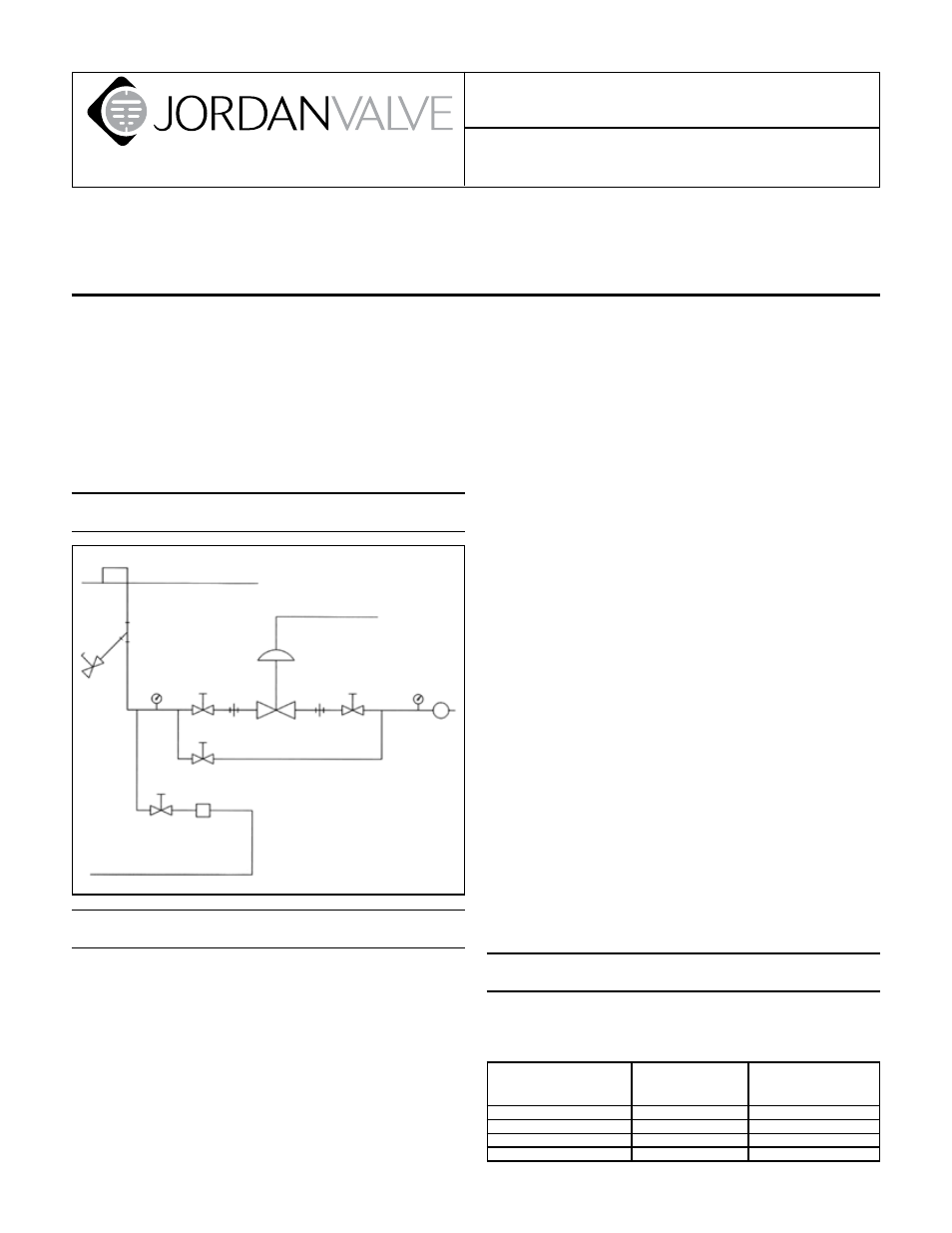Jordan Valve Mark 70 Series – Sliding Gate Control Valve User Manual
Ideal installation preferred installation, Start-up

3170 Wasson Road • Cincinnati, OH 45209 USA
Phone 513-533-5600 • Fax 513-871-0105
[email protected] • www.jordanvalve.com
I & M Mk 701/702/707/711 Series
Installation & Maintenance Instructions for
Mark 701/702/707/711 Control Valves
Warning: Jordan Valve control valves must only be used, installed and repaired in accordance with these Installation
& Maintenance Instructions. Observe all applicable public and company codes and regulations. In the event of leak-
age or other malfunction, call a qualified service person; continued operation may cause system failure or a general
hazard. Before servicing any valve, disconnect, shut off, or bypass all pressurized fluid. Before disassembling a valve,
be sure to release all spring tension.
Please read these instructions carefully!
Your Jordan Valve product will provide you with long,
trouble-free service if it is correctly installed and main-
tained. Spending a few minutes now reading these in-
structions can save hours of trouble and downtime later.
When making repairs, use only genuine Jordan Valve
parts, available for immediate shipment from the factory.
Ideal Installation
Preferred Installation
To protect the valve from grit, scale, thread chips,
1.
and other foreign matter, all pipe lines and piping
components should be blown out and thoroughly
cleaned before the valve is installed.
Shutoff valves, pressure gauges, and bypass piping
2.
should be installed as indicated in the Ideal Installa-
tion Schematic to provide easier adjustment, opera-
tion, and testing.
A line strainer should be installed on the inlet side of
3.
the regulator to protect it from grit, scale and other
3
4
1
7
2
7
1
4 5
R
1
1
6
Condensate Return Line
Main Line
Control Air
1 Shut-off Valve
2 Jordan Control Valve
3 Strainer & Drain Valve
4 Pressure Gauge
5 Relief Valve
6 Steam Trap
7 Pipe Union
foreign matter. A 0.033 perforated screen is usually
suitable. Line strainers are available from Jordan Valve.
For best control, 3’0” straight sections of pipe should
4.
be installed on either side of the valve.
In preparing threaded pipe connections, care should
5.
be exercised to prevent pipe-sealing compound
from getting into the pipelines. Pipe sealing com-
pound should be used sparingly, leaving the two
end threads clean. Jordan uses, and recommends,
thread sealer Teflon ribbon.
The flow arrow on the valve body must be pointed
6.
in the direction of flow. Ideally, the valve should be
installed in the highest horizontal line of piping to
provide drainage for inlet and outlet piping, to pre-
vent water hammer, and to obtain faster response.
If possible, install a relief valve downstream from the
7.
valve. Set at 15 psi above the control point of the
valve.
In hot vapor lines, upstream and downstream pip-
8.
ing near the valve should be insulated to minimize
condensation.
In gas service, if the control pressure (downstream)
9.
is 25% of the inlet pressure or less, expand the out-
let piping at least one pipe size. A standard tapered
expander connected to the outlet of the valve is
recommended.
Where surges are severe, a piping accumulator is
10.
recommended.
On steam control applications, install a steam trap
11.
with sufficient capacity to drain the coil or condens-
er. Be sure to have a good fall to the trap, and no
back pressure. Best control is maintained if the coil
or condenser is kept dry.
Start-Up
Be sure that the action of the control valve and of
1.
the controller are such as to give the desired results.
If an increase in
pressure or temperature
must:
And the action of
the valve is:
Then the action of the
controller must be:
close valve
air-to-close (direct)
direct
close valve
air-to-open (reverse)
reverse
open valve
air-to-close (direct)
reverse
open valve
air-to-open (reverse)
direct
